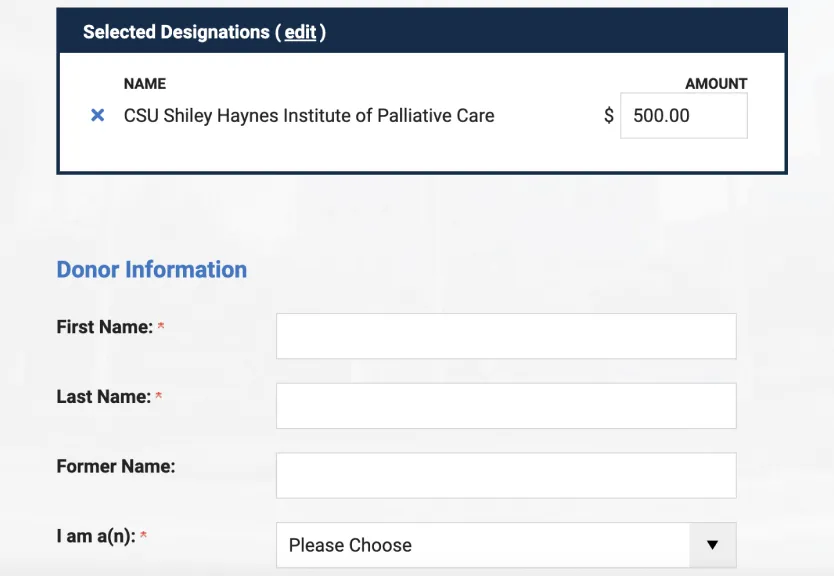Palliative Care Pioneer, Practitioner and Educator Among Featured Keynotes
Because the hospice and palliative care movement in the United States is relatively young in medical history terms, we have the privilege of having our many of its pioneers still actively practicing in the field. Charles von Gunten MD, Ph.D., is one of those pioneers, and will be among the featured keynote speakers at the CSU Shiley Institute for Palliative Care’s Innovate. Investigate. Educate: Advancing Academic Palliative Care Education and Research symposium in San Diego on Sept. 28-29, 2017.
25 Years Devoted to Palliative Care
Although palliative care principles were first described by British physician, nurse and social worker Cicely Saunders in 1958, only in 1982 was the hospice benefit for Medicare recipients signed into law by then President Ronald Reagan. Reagan and von Gunten were both recognized, along with fourteen other women and men, by the American Academy of Hospice and Palliative Medicine (AAHPM) in celebration of 25 or more years of their service to the profession in 2014.
Sequins, Not Medications
Von Gunten penned a vivid story recalling people and places in his career in a journal article titled, “Optimism,” published in the Journal of Palliative Medicine[1] in 2008. He describes a friend and Roman Catholic priest who first exposed him to concepts of palliative care during his years in Colorado as a medical student. Over dinner, von Gunten learned how this perceptive volunteer chaplain at a hospice in Lakewood, founded less than a decade earlier, helped a patient live out her last days peacefully and happily as a Grand Duchess, an illusion that was a symptom of her disease but was palliated by support with sequined thrift-store gowns rather than an antipsychotic medication like “haloperidol or perphenazine.”
Palliative Care Different From Other Care
Starting his internal medicine residency at Northwestern Memorial Hospital in Chicago in 1988, von Gunten describes observing how “different” the approaches to patient care and support were in the inpatient hospice unit than in the “rest of the hospital.” He found that applying what he learned in Saunders and Sykes’ manual on terminal care[2], and offering suggestions for management to his colleague physicians were welcomed and acted upon. Von Gunten described that the work “was so absorbing” that it changed his professional path to grow the field, both within his own career but among colleagues and institutions nationally and internationally.
National Certification for the Profession
Von Gunten was among those appointed to a committee to establish a certification process for palliative medicine physicians, the first examination for which was administered in 1996. Ten years later, formal recognition as a medical specialty was achieved. In his article, von Gunten shared, “When we started, we were told that formal recognition would come in 10–30 years, if it came at all.”
SPIKES Useful in More Than End-of-life Conversations
His career evolved into leadership and education roles where he described his training using SPIKES, the six-step protocol for delivering bad news by Buckman,[3] came in handy as a management tool working with hospital administrators. Von Gunten became medical director of San Diego Hospice in 1999, where he advanced more formally into education as Provost, to “foster the next generation” of hospice and palliative care physicians, nurses, social workers and counselors. He currently serves as Adjunct Professor of Medicine at The Ohio State University School of Medicine in Columbus, Ohio and Clinical Professor of Medicine, Ohio University Heritage College of Osteopathic Medicine in Athens, Ohio.
Wit, Humor and Compassion Will Cap Symposium Experience
Von Gunten’s rich experience, humor, wit and compassion will be the framework for a discussion between himself and CSU Shiley Institute for Palliative Care’s Executive Director Helen McNeal, also a nationally-recognized leader in the palliative care movement, slated to conclude the Symposium. As they reflect on the movement’s history, they will also vision the rich, meaningful opportunities that exist on the higher education and healthcare horizon for educators and researchers in this field.
[1] Charles F. von Gunten, Optomism, Journal of Palliative Medicine. January 2008,11(1): 33-35
[2] Saunders C, Sykes N: The Management of Terminal Malignant Disease, 3rd ed. London: Edward Arnold, 1993.
[3] Buckman, R: How to Break Bad News: A Guide for Healthcare Professionals. Baltimore, Maryland: Johns Hopkins University Press, 1992.




